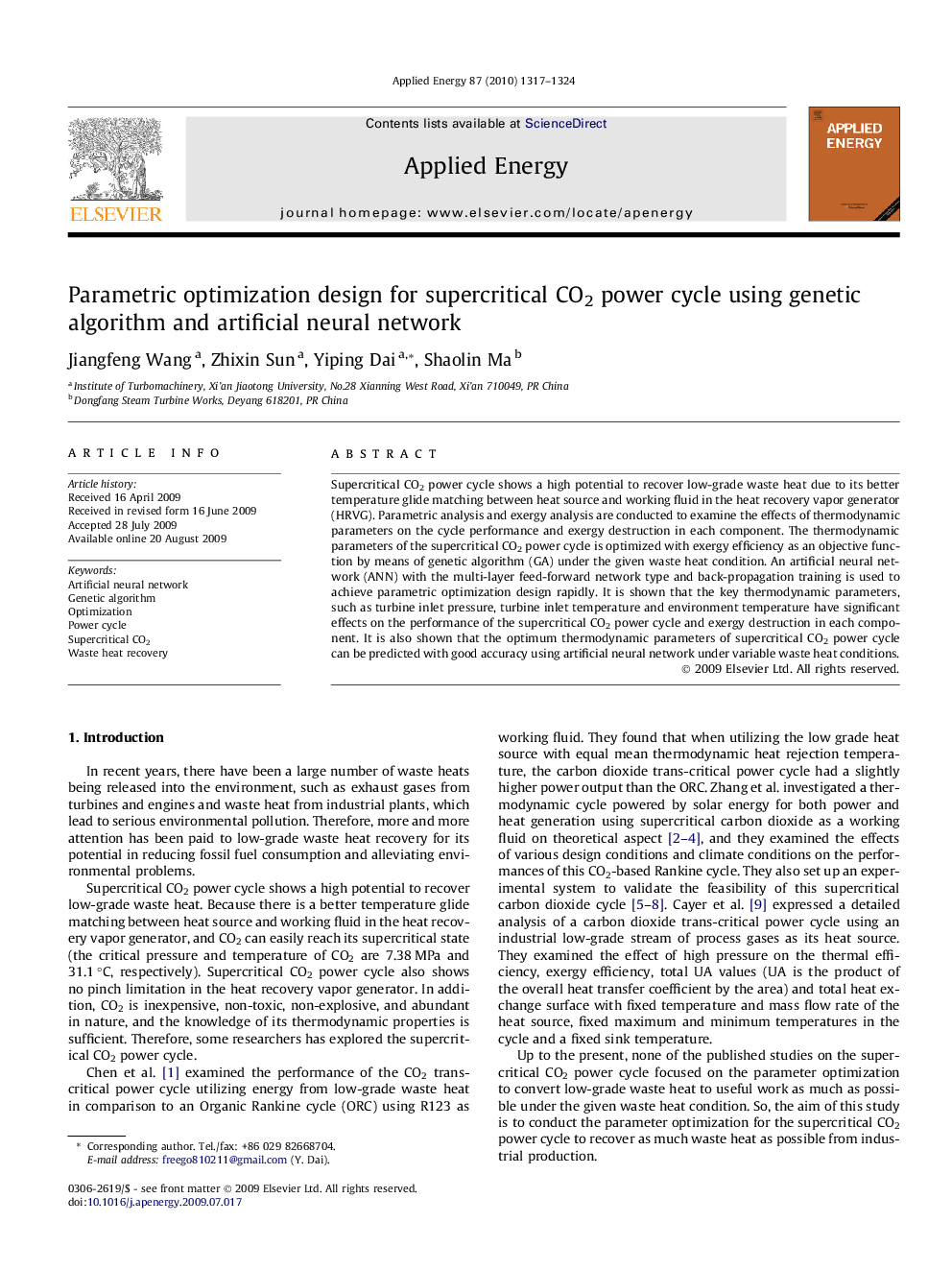| Article ID | Journal | Published Year | Pages | File Type |
|---|---|---|---|---|
| 244640 | Applied Energy | 2010 | 8 Pages |
Supercritical CO2 power cycle shows a high potential to recover low-grade waste heat due to its better temperature glide matching between heat source and working fluid in the heat recovery vapor generator (HRVG). Parametric analysis and exergy analysis are conducted to examine the effects of thermodynamic parameters on the cycle performance and exergy destruction in each component. The thermodynamic parameters of the supercritical CO2 power cycle is optimized with exergy efficiency as an objective function by means of genetic algorithm (GA) under the given waste heat condition. An artificial neural network (ANN) with the multi-layer feed-forward network type and back-propagation training is used to achieve parametric optimization design rapidly. It is shown that the key thermodynamic parameters, such as turbine inlet pressure, turbine inlet temperature and environment temperature have significant effects on the performance of the supercritical CO2 power cycle and exergy destruction in each component. It is also shown that the optimum thermodynamic parameters of supercritical CO2 power cycle can be predicted with good accuracy using artificial neural network under variable waste heat conditions.
